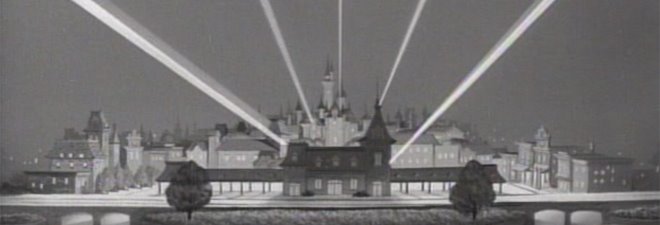So, I started this by weighing Jim Hill's article on Disney's Night Kingdom against the disappointment I heard on many fronts that this was not going to be something like a 4 hour dark ride. We'll go into that later.
The thing that struck me along the way is that something in Jim Hill's math doesn't hold up, or Disney is doing something very uncommon for them. Let me explain.
There are really just two primary factors in assessing how much money your gated attraction will earn annually: attendance and per cap spending (what the average guest spends). Once you know that, you can come up with a picture of what you'll earn in a year (just multiply the two). That's your revenue.
And, from that, you can figure out how much you can spend on the initial capital investment in the park. To simplify, you subtract all your operating costs--labor, insurance, licensing, etc--what you are left with is your EBITDA--earnings before interest taxes depreciation and amortization. We'll just call it profit, though its not exactly the same.
A good profit is 20% of earnings. How many years will you spend your profits paying back your initial investment? Back in the early 1990's Eisner and Wells used to tout their 5 year payback model.

What does it cost to feed a couple of these things every year? Image (c) Disney.
We'll stop there and do some quick math. Let's say this new park is a $300 gate price, plus Disney wrestles another $20 bucks out of each guest. Per cap spending is $320. And let's use Jim's 2000 person capacity number and--because this is Disney--we'll assume that every day of the year, the park is filled to the gills. 2000 x 365 = 730,000 guests per year x $320 = $233,600,000. Holy mackerel but that is a lot of money!
But, if Disney's making a 20% profit, that is only $46.7 million annually.
I say only, because one of Hill's big points is that Disney is going to be spending north of $500m on this park. At 20% profit, it would take Disney more than a decade to pay that back. Figure in normal interest rates and that payback window is much longer.
Now, if Disney were able to make a 35% profit--not unheard of in attractions, but a sign of HUGE success--profits are $81.7 million. Much better but still requiring more than 6 years to pay back the principal Jim Hill is referencing.
Throw in Hill's claims that the first two years the park won't even be running at full capacity...who knows?
But my take is that Disney is betting on a park that HAS to do PHENOMENAL numbers from opening--50% or 60% profits--or it will quickly show itself to be an albatross around the company's neck. That, or Jim Hill's information is off.


No comments:
Post a Comment